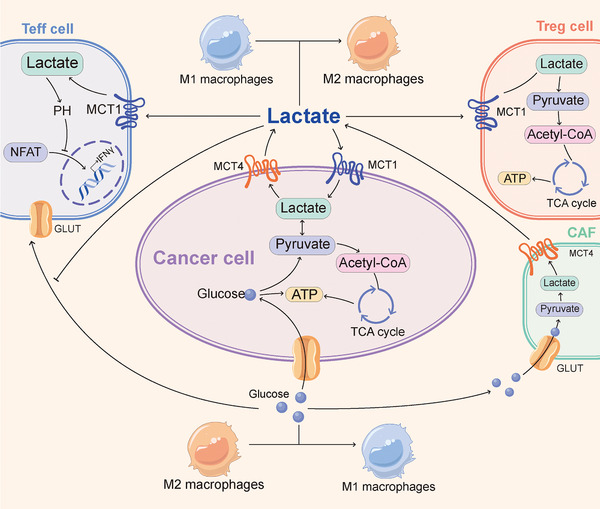FIGURE 1.

Effect of glucose and lactate metabolism on infiltrating lymphocyte function. In the TME, tumor cells consume large amounts of glucose and produce lactate. Meanwhile, tumor cells reprogram CAFs to undergo aerobic glycolysis and secrete lactate. Glucose promotes the function of Teff cells and stimulates the differentiation of macrophages into M1‐like phenotype. Relatively, lactate can be metabolized by cancer cells and Treg cells to maintain energy homeostasis, stimulates macrophages to differentiate into M2‐like phenotype, and inhibits T cell effector functions. Abbreviations: acetyl‐CoA: acetyl‐coenzyme A; ATP: adenosine triphosphate; CAFs: cancer‐associated fibroblasts; GLUT: glucose transporter; IFN‐γ: interferon γ; MCT: monocarboxylate transporters; NFAT: nuclear factor of activated T cells; pH: hydrogen ion concentration; TME: tumor microenvironment; TCA: tricarboxylic acid; Treg: regulatory T; Teff: effector T
